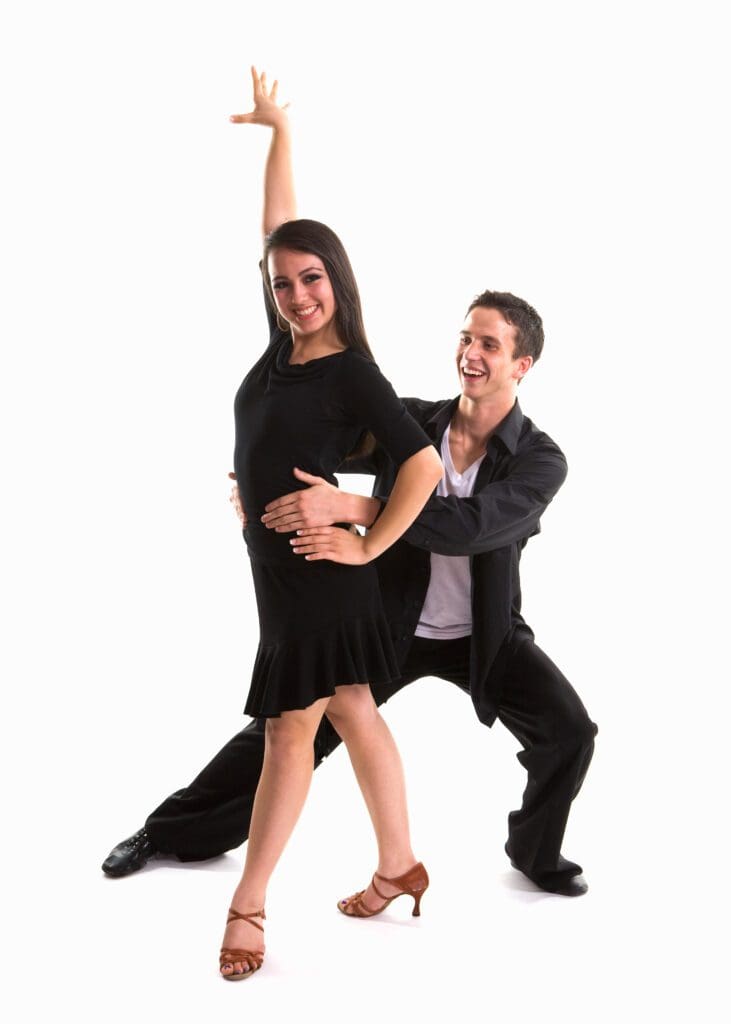West Coast Swing
West Coast Swing History
West Coast Swing, a smooth and sophisticated dance style, has a rich history rooted in the Swing dance family:
Origins:
- West Coast Swing evolved from the Lindy Hop, a popular dance in the 1930s and 1940s.
- Originating in California, it was influenced by the smooth style of Hollywood movie dances.
Development:
- In the 1940s and 1950s, dancers in California began adapting the Lindy Hop to fit the smaller, crowded dance floors.
- This adaptation led to a more slotted and less rotational style compared to East Coast Swing or Lindy Hop.
Popularity:
- By the 1960s, West Coast Swing gained popularity as a distinct dance style.
- It was danced to a wide range of music, from blues and rock ‘n’ roll to contemporary pop.
Evolution:
- Over time, West Coast Swing became more refined and sophisticated, with an emphasis on connection and improvisation.
- It absorbed influences from other dance forms like Latin and Ballroom, making it versatile and expressive.
Modern Scene:
- Today, West Coast Swing is popular worldwide, known for its adaptability to various music genres and its playful, interpretive nature.
- It is a featured dance in both social and competitive dance scenes, celebrated for its creativity and musicality.
In summary, West Coast Swing evolved from the Lindy Hop into a distinct and versatile dance style, marked by its slotted movement, adaptability to various music styles, and emphasis on connection and improvisation.
West Coast Swing Characteristics
- West Coast Swing is a smooth, stylish dance known for its slotted movements, where dancers move back and forth in a linear pattern. It’s characterized by its improvisational nature, allowing for a wide range of musical interpretations and personal expression. The dance emphasizes connection between partners, intricate footwork, and syncopated rhythms, making it both playful and sophisticated.
West Coast Swing Music Information
West Coast Swing is danced to a diverse range of music, each with specific characteristics that complement the dance’s unique style:
Time Signature: The music typically has a 4/4 time signature, providing a steady and consistent rhythm for dancers.
Tempo: The tempo can vary widely, accommodating slow, sultry numbers to faster, more upbeat tracks. It generally ranges from 90 to 120 beats per minute (bpm), allowing for both smooth and energetic dancing.
Rhythmic Variety: West Coast Swing music is known for its rhythmic diversity, often featuring syncopated beats and breaks. This variety allows dancers to play with timing and add personal flair.
Musical Genres: The dance is versatile and can be performed to a multitude of genres, including blues, country, funk, rock, and pop. This adaptability makes it popular across different musical tastes.
Smooth Melodies: The melodies in West Coast Swing music are typically smooth and continuous, complementing the dance’s flowing and slotted movements.
These musical elements provide the framework for West Coast Swing, allowing it to be a highly adaptable and expressive dance form, suitable for a wide range of music styles.
